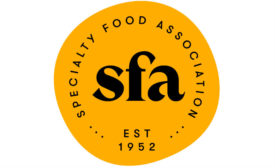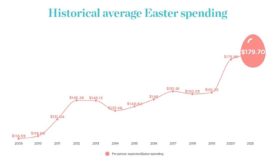Home » Keywords: » consumer spending
Items Tagged with 'consumer spending'
ARTICLES
Six macro themes shape consumption behaviors.
Read More
SFA: Specialty food sales reach $170B in 2020
COVID-19 encouraged center store purchases, reduced innovation discovery.
June 16, 2021
Numerator reports 2 in 5 consumers will celebrate Easter at home
90 percent of consumers to buy candy as gifts.
March 31, 2021
One year into COVID-19, U.S. consumers projected to spend $21B on Easter
Consumers are expected to drop $3B on candy.
March 31, 2021
Holiday spending projections are bright despite COVID-19 concerns
Online sales expected to increase, just as at the start of the pandemic.
December 23, 2020
After ‘stock-up’ phase of pandemic, consumers expected to tighten spending
Nielsen says FMCG sales shot up $77.9B in the year ending Sept. 12, 2020.
October 7, 2020
How consumers are shopping online during the COVID-19 pandemic
CPG sales increased by $8.5 billion in the two weeks ending March 21, Nielsen says, but sales are slowing.
April 8, 2020
Valentine’s Day 2020 spending to hit record of $27.4B
Consumers expected to spend $2.4B on candy.
February 11, 2020
Saving the environment, one purchase at a time
Hartman Group report suggests more consumers are purchasing sustainable products.
October 23, 2019
Why candy companies should fight to keep — and expand — food stamps
Trump recently announced plans to cut SNAP, but low-income Americans aren’t the only ones the program benefits.
July 24, 2019
EVENTS
Sponsored Webinar Sponsored Webinars
4/16/25 to 4/16/26
Contact: Demi
Trending Tastes and Hot Hues: What Snack and Bakery Consumers Crave
Snack on the latest trends, news, and developments!
Stay in the know with Snack Food & Wholesale Bakery, the premier source of information for snack, bakery, and confectionery professionals.
JOIN TODAY!Copyright ©2025. All Rights Reserved BNP Media.
Design, CMS, Hosting & Web Development :: ePublishing











